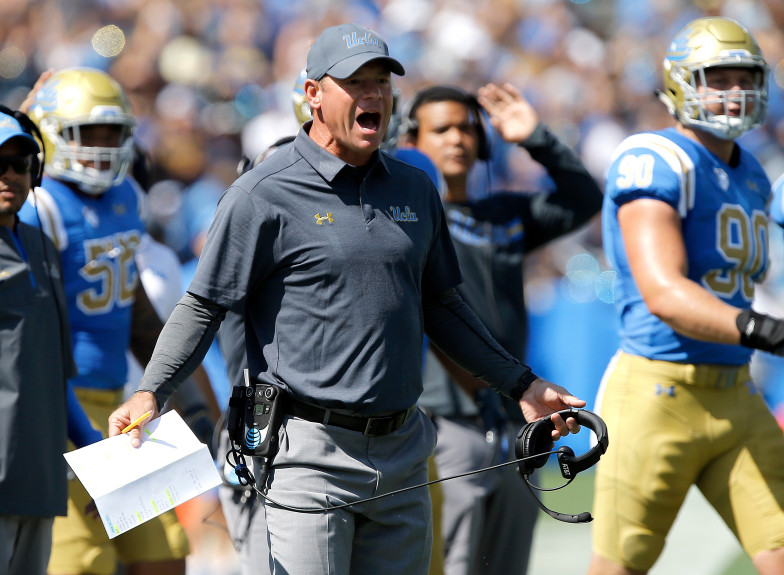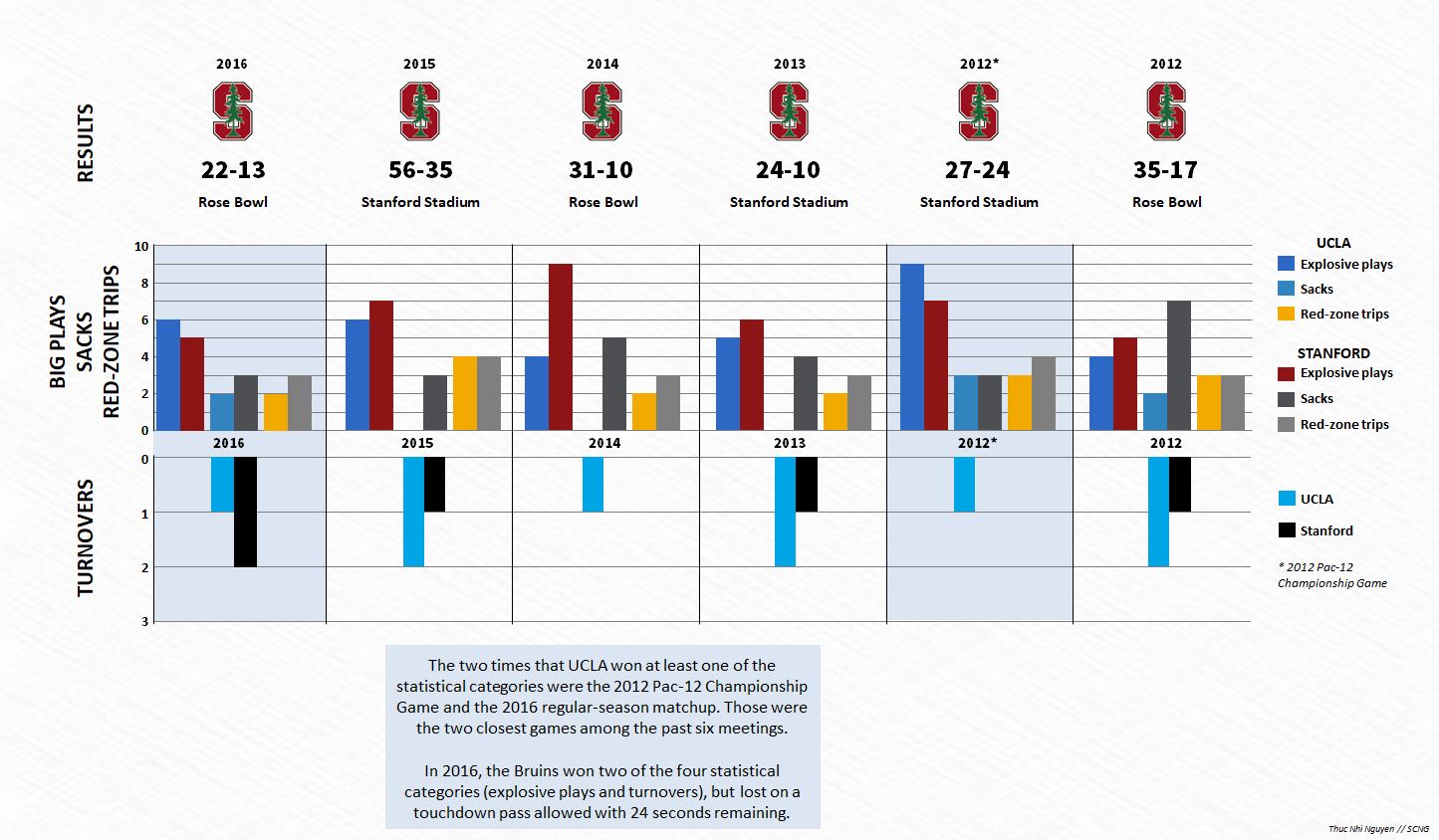
UCLA head coach Jim Mora, center, yells at a referee during the first half of an NCAA college football game against Hawaii in Pasadena, Calif., Saturday, Sept. 9, 2017. (AP Photo/Alex Gallardo)
Of the many statistical battles that contribute to the outcome of a football game, UCLA has identified four main ones that contribute to wins: turnovers, explosive plays, sacks and red-zone trips.
Head coach Jim Mora said Wednesday the UCLA staff has studied years of games in the Pac-12 and found that the teams with fewer turnovers and more explosive gains win more than 90 percent of the time. Mora added that sacks and red-zone trips are the third and fourth most-significant contributing factors, respectively, according to the program’s research.
So as the Bruins try yet again to snap their losing streak to Stanford, here’s a look at UCLA’s performance against the Cardinal during Mora’s tenure with regard to his four key statistical categories:
Mora defined “explosive plays” as a 20-yard pass or a 12-yard run, so the above graph uses his metric. It does not include 15-yard penalties.
UCLA has only won one or more of the categories in a game twice during the current nine-game losing streak. (Due to space constraints, only games during Mora’s tenure are included in the above graph.) Not surprisingly, those two instances were the closest.
In the 2012 Pac-12 Championship Game, the Bruins had nine explosive plays to Stanford’s six, tied in sacks and lost in red-zone trips and turnovers by one each. UCLA outgained the Cardinal 461-325 and had a chance to force overtime on the final drive, but Ka’imi Fairbairn‘s 52-yard field goal fell short with 34 seconds left.
In 2016, UCLA got even closer. The Bruins won in explosive plays (6-5) and turnovers (2-1) — the two most critical categories, according to Mora — but gave up a touchdown with 24 seconds left. It was only the second time during Mora’s tenure that the Bruins lost after leading at halftime.
So what might this mean for Saturday night? Clearly, last year shows that past performance is not always a perfect predictor of future results. Mora said about 93 or 94 percent of teams that win in explosive plays and turnovers ended up winning the game. Unfortunately for the Bruins, something else went wrong in the formula and they ended up in the tiny minority. However, it seems that if the Bruins can limit big plays and take care of the ball Saturday, they’ll at least give themselves a chance to come out on top in the end.

